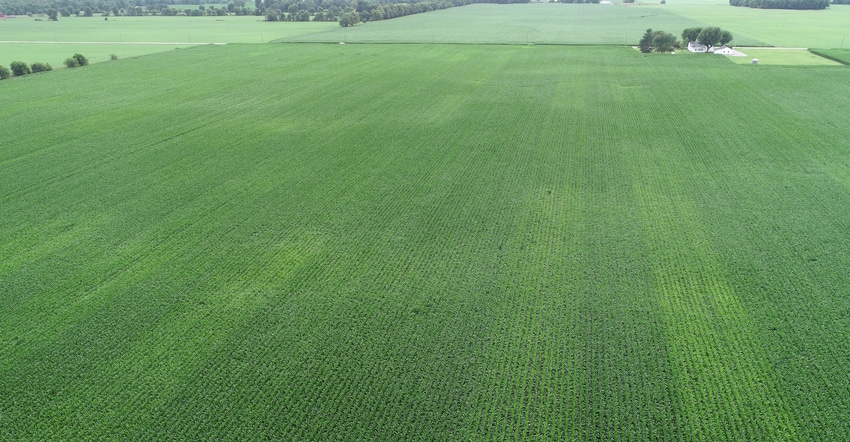
The safest thing Jim Camberato can say about sulfur research in corn is that when there’s a yield response, it more than pays for the sulfur. But there’s not always a response, and there’s no good way to predict whether you will see a response in advance.
Camberato and Bob Nielsen, both Purdue Extension agronomists, conducted 11 large-plot strip trials at seven locations over the past two years. Here are four things they know:
1. The researchers saw a corn yield response in six of 11 trials. The responses were typically sizable, ranging from 4 to 22 bushels per acre and averaging 14 bushels per acre.
2. When sulfur delivers a yield response, return on investment is usually sizable. Camberato figures it costs about $7 per acre in material for the sulfur they applied. They typically applied ammonium thiosulfate with nitrogen as starter or as sidedress. At $3.50-per-bushel corn, it only takes 2 bushels per acre to pay for the sulfur. Return above cost of material ranged from $7 to $70 per acre in the six trials where they saw a response. They never saw lower yield for sulfur.
3. Splitting the application didn’t matter. They didn’t see an extra advantage for applying some sulfur early and some later.
4. The maximum response showed up at the lowest rate applied. If they applied 20 and 30 pounds per acre, for example, they didn’t see a larger increase at 30 vs. 20. Camberato believes they likely haven’t found the lower limit for response yet.
Questions remain
Traditional wisdom says to expect a response on sands and other low organic matter, lighter soils. “We haven’t seen any pattern hold together so far,” Camberato says. “We’ve seen response on silt loams in some places and not on sands in other places.”
In fact, one of the biggest responses came on Ken Simpson’s farm near Morristown, Ind., in 2018. Yield response in various parts of the field varied from 5 to 40 bushels per acre. The large-scale plot was replicated five times.
“We saw visual responses during the summer with drone flights,” Nielsen notes. “Areas where we saw lighter-colored corn which didn’t get sulfur tended to have higher yield responses.”
These are silt loam soils with about 2.5% organic matter, Camberato says.
“You really can’t rely on routine soil tests, because sulfur is too mobile in the soil,” Camberato notes. “Tissue testing isn’t that reliable in predicting responses either.”
What can you do? “We’ve seen enough indication of response that we encourage you to do checks on your own farm,” Camberato says. “Either apply sulfur on most of a field and leave check strips where you don’t apply, or don’t apply sulfur except on a few strips. Unless you test it for yourself, you really don’t know if you’re getting a response or not.”
Nielsen and Camberato welcome growers to collaborate with them on large-scale, replicated field trials. For more information, email them at [email protected] or [email protected].
About the Author(s)
You May Also Like




